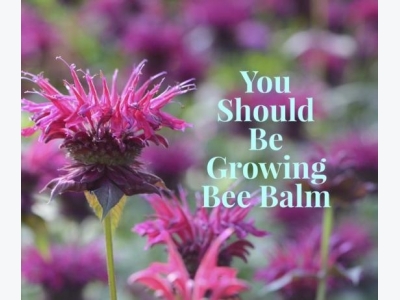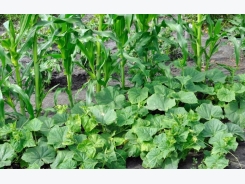What You Need to Know About the Bee Balm Plant

Bee balm, which is also known as Oswego tea, horsemint and bergamot, is a versatile perennial plant that can add color and beauty to any garden.
Native to the eastern portion of North America, bee balm flowers, which bloom in mid to late summer, has many uses. The scarlet-colored flowers are edible; the leaves can be used to make tea. In fact, Oswego tea was the beverage chosen by colonists who lost access to the English teas after the Boston Tea Party. Bee balm is also a good addition to homemade potpourris and lotions.
The plants grow anywhere from two to four feet in height and work well to attract butterflies, bees and hummingbirds to the garden.
In addition to being available at gardening centers, bee balm is relatively easy to grow from seeds, cuttings and root divisions. In fact, the plant, which is a member of the mint family, can become so invasive that you will be forced to find methods to eradicate it because bee balm quickly spreads via underground rhizomes.
Bee balm grows well in a variety of soil types. Although the plants prefer plenty of sunshine, bee balm will tolerate partial shade in hot climates.
Bee balm, which does not grow well in drought conditions, can be planted in spring two weeks before the last frost or late in summer at least two months before the first frost. If planting from seed, seeds can be sown eight to 10 weeks prior to the last frost. Seeds, which usually take a week to 10 days to emerge, should be planted about one-eighth inch deep and spaced one inch apart. Plants should be thinned to stand about one foot apart.
If you are especially taken by a bee balm plant’s particular color, you will have to divide the existing plant in order to propagate it. Although you can start new plants from seeds that you harvest yourself, the color of the flower blooms can change because bee balm has a tendency to revert back to its wild form.
To start plants from cuttings, choose a stem with two sets of leaves. Strip the lower set of leaves off and plant in potting soil, making sure to cover the nodes from which the lower leaves were stripped. It will take two to three weeks for the bee balm to root.
Be careful where you plant bee balm. It is probably best to avoid high-traffic areas used by people and pets because of the fact that bees love the plants.

Flickr photo courtesy of raymondgobis.
Bee balm will succumb to root rot in cold, wet soil during the winter months. It is a good idea to add a couple of inches of mulch to the bed of bee balm during the fall months.
In humid conditions, bee balm plants can suffer from powdery mildew. Although powdery mildew is not usually fatal to the plant, it is undesirable. Correct the situation by providing good air circulation and water the plants at ground level whenever possible.
Once you have established a bed of bee balm, sit back and enjoy the bee and butterfly action while you delight in the pleasant fragrance.
Có thể bạn quan tâm
Phần mềm

Phối trộn thức ăn chăn nuôi

Pha dung dịch thủy canh

Định mức cho tôm ăn

Phối trộn phân bón NPK

Xác định tỷ lệ tôm sống

Chuyển đổi đơn vị phân bón

Xác định công suất sục khí

Chuyển đổi đơn vị tôm

Tính diện tích nhà kính

Tính thể tích ao hồ



 15 of the Best Common Organic Fertilizers
15 of the Best Common Organic Fertilizers  Best Patio Tomato Varieties
Best Patio Tomato Varieties